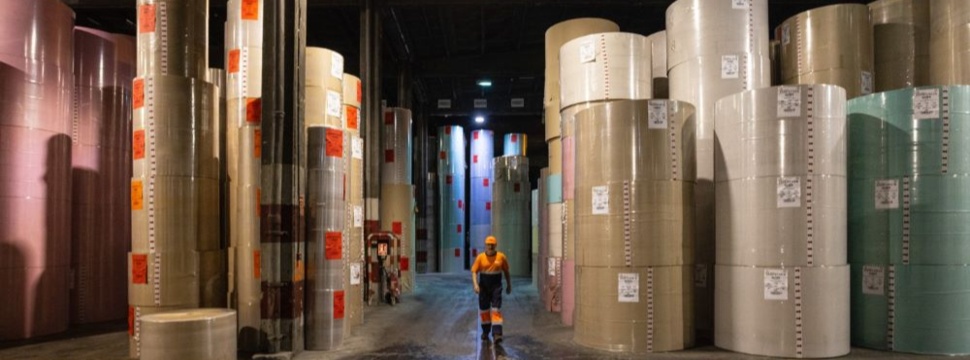Closing the loop with paper carrier bags
News General news
Less raw material, less waste, fewer emissions – the circular economy is at the top of the agenda. Choosing fibre-based packaging such as paper carrier bags is one piece of the puzzle that retailers and brand owners can complete to take the next step in contributing to the bio-based circular economy. Paper carrier bags are a welcome resource in the paper recycling mix. A member of the initiative “The Paper Bag” explains how paper carrier bags are recycled into new fibre-based products. An infographic shows the cycle of paper carrier bags.

A study has found that fibre-based packaging can be recycled more than 25 times. It concluded that the number of possible recycling cycles is limited mainly due to losses that occur during the cleaning of the fibre material and the collection rate. In Europe, the recycling
rate for paper and cardboard packaging is already very high at 82.5% in 2021. The 4evergreen alliance set thegoal to reach 90% for fibre-based packaging by 2030.
“Paper carrier bags are a valuable part of the paper recycling mix,” knows Matías Cowper Coles, Business Development Manager at the Spanish paper producer and paper recycler Alier. Alier is one of the members of the initiative “The Paper Bag” that recycles paper carrier bags and produces new fibre-based products from the fibres – among them paper carrier bags. But how does this work in practice?
Paper collection
When a paper carrier bag is no longer good for another reuse, it should be placed in the paper
and cardboard recycling bin. In Europe, different paper grades are collected in the same
container. After being picked up by the designated facilities, the paper is separated into different qualities. This is important because for some products, high-quality fibres must be used. Paper carrier bags, as other kraft paper products, can be sorted into different qualities, depending on the demand and the quality. Usually, they are mixed together with OCC – old corrugated cardboard.
Recycling paper carrier bags
When the raw material arrives at the paper factory, samples of the material are tested to classify them according to different parameters that are important for the papermaking process and the qualities that will be produced at the mill. “For each of our paper grades,
we need a special material mix. The stronger recycled kraft paper we want to produce, the longer the fibres have to be in the mix,” explains Cowper Coles. “The kraft paper for paper carrier bags is one example where we use material with long, strong fibres.” For the recycling process, the selected paper mix is put into a pulper. The resulting pulp is filtered several times and cleaned of impurities. It is then collected in silos and stocked before it enters the paper machine, where it is manufactured into new paper that can be used in carrier bags, paper sacks, test liners or fluting.
The paper bag fibre cycle
The Spanish organisation La Bolsa De Papel has produced an infographic that demonstrates the fibre cycle for paper carrier bags – from the sourcing of the raw materials, the production of the paper and the paper bags via the distribution at retail sites, the use and reuse from consumers to the collection and the recycling process.
“Reusing and recycling paper carrier bags replaces new raw materials. This saves natural
resources and reduces green-house gas emissions since the CO2 will keep stored in the paper products for a longer period,” explains Elin Gordon, Secretary General of CEPI Eurokraft. “Therefore, we want to encourage retailers to support the circular economy. They can do so by offering paper carrier bags to their customers and motivating them to reuse their bags for as long as possible before placing them in the recycling bins for paper and cardboard to recycle the fibres.”










